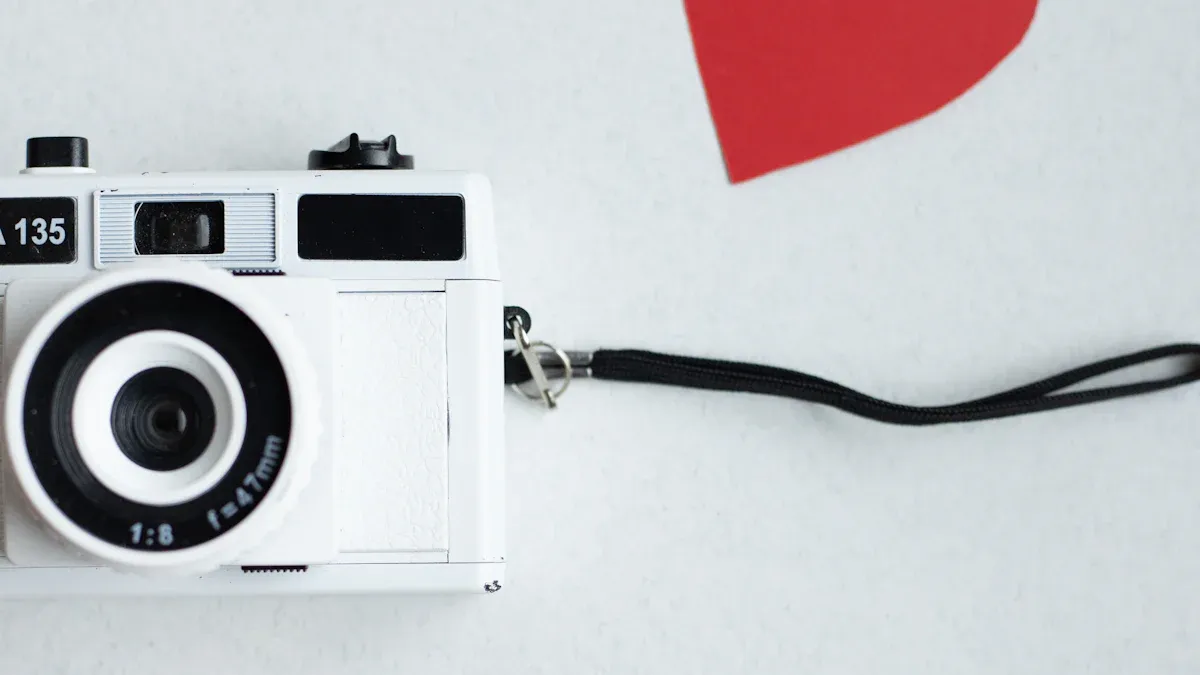How to Prevent Battery Leaks in Your Helius Flashlight and Helius Headlamp

Battery leaks occur when chemicals escape from a battery, often due to damage or age. These leaks release substances like zinc chloride and ammonia, which corrode internal components. This corrosion can harm the circuitry and battery contacts of your Helius flashlight or headlamp, reducing their functionality. Preventing leaks ensures your devices remain reliable and long-lasting.
Key Takeaways
Use new, good-quality batteries for better performance and fewer leaks.
Keep your flashlight and headlamp in a cool, dry spot. This helps protect batteries and makes them last longer.
Check batteries often for damage or wear. Replace damaged ones right away to stop leaks.
Causes of Battery Leaks

Chemical reactions inside batteries
Battery leaks often result from chemical reactions that occur as the battery ages or depletes. For example:
Zinc-carbon batteries use ammonium chloride as an electrolyte, which is acidic and prone to leakage.
When fully consumed or after three to five years, these batteries release corrosive byproducts like zinc ammonium chloride, ammonia, and manganese hydroxide.
These substances can damage the metal components inside your Helius flashlight or headlamp. Understanding these reactions helps you choose batteries less likely to leak.
Aging or expired batteries
Batteries degrade over time, even if unused. As they age, their internal materials break down, increasing the risk of leaks. Expired batteries often lose their structural integrity, allowing chemicals to escape. You should always check the expiration date before using a battery. Replacing old batteries promptly can prevent damage to your devices.
Improper usage or storage
How you handle and store batteries plays a significant role in preventing leaks. Overcharging batteries generates heat, which can damage internal components. Physical damage, such as dropping or puncturing a battery, can also crack its casing. Additionally, storing batteries in extreme conditions—like high temperatures or excessive moisture—compromises their structure. Always store your flashlight and headlamp in a cool, dry place to avoid these risks.
Mixing different battery types or brands
Using batteries of different types or brands together can lead to uneven power distribution. This mismatch causes some batteries to work harder than others, increasing the likelihood of leaks. For instance, pairing an alkaline battery with a zinc-carbon battery can create imbalances. Always use batteries of the same type and brand to ensure consistent performance and reduce the risk of leakage.
How to Prevent Battery Leakage
Use high-quality, fresh batteries
Using fresh, high-quality batteries is one of the best ways to ensure your Helius flashlight and headlamp perform optimally. Fresh batteries deliver consistent power, which helps maintain the device's functionality. High-quality options also reduce the risk of leaks or failures. Consider switching to rechargeable batteries, as they provide steady performance and minimize the need for frequent replacements.
Benefits of fresh batteries:
Consistent power delivery for optimal performance.
Reduced risk of leakage or damage.
Longer lifespan for your flashlight or headlamp.
Avoid mixing old and new batteries
Mixing old and new batteries can lead to inefficiencies in power usage. Older batteries may discharge faster, causing the newer ones to overwork. This imbalance can result in overcharging or undercharging, which degrades battery performance and increases the risk of leaks. Always replace all batteries at the same time to avoid these issues.
Consequences of mixing batteries:
Uneven charging and discharging.
Faster degradation of battery life.
Increased likelihood of leaks.
Store your Helius flashlight and headlamp in a cool, dry place
Proper storage is essential for battery care. High temperatures and moisture can damage batteries, leading to leaks. Always store the batteries properly in a cool, dry environment to protect them from extreme conditions. This simple step can significantly extend the lifespan of your Helius flashlight and headlamp.
Remove batteries when not in use for extended periods
If you don’t plan to use your flashlight or headlamp for a while, remove the batteries. This prevents chemical reactions that can cause corrosion and leakage. Even unused batteries can corrode over time, especially as they age. By removing them, you eliminate the risk of leaks damaging your device.
Why remove batteries during non-use:
Prevents chemical reactions that lead to corrosion.
Reduces the risk of seal breaches and leaks.
Protects the internal components of your device.
Regularly inspect batteries for signs of wear or damage
Make it a habit to check your batteries for any signs of wear, such as cracks, bulges, or leaks. Damaged batteries are more likely to fail and cause harm to your Helius flashlight or headlamp. Replace any compromised batteries immediately to prevent further issues.
Apply a protective layer to battery terminals
Applying a thin layer of petroleum jelly or a specialized battery terminal protector can help prevent corrosion. This protective layer acts as a barrier, reducing the chances of chemical reactions that lead to leaks. It’s a simple yet effective way to maintain your device’s battery compartment.
Tip: Always handle batteries with care to avoid physical damage, which can increase the risk of leaks.
Maintenance Practices for Your Helius Flashlight and Headlamp

Clean battery compartments regularly
Keeping the battery compartments clean is essential for proper maintenance. Dust, dirt, or residue can interfere with the connection between the batteries and the device. Use a soft, dry cloth to wipe the compartment regularly. For stubborn grime, a slightly damp cloth can help. Avoid using excessive moisture, as it may damage the internal components. Regular cleaning ensures your flashlight or headlamp operates efficiently and reduces the risk of battery leaks.
Inspect for corrosion or residue
Corrosion often appears as a white or greenish powder around the battery terminals. This residue can disrupt the electrical flow and damage your device. Check the battery compartment frequently for any signs of corrosion. If you notice residue, clean it immediately to prevent further damage. Early detection and cleaning are key to maintaining your Helius flashlight and headlamp.
Use appropriate cleaning solutions and tools
When cleaning corrosion, use a solution of vinegar or baking soda mixed with water. Apply the solution with a cotton swab or soft brush to gently remove the residue. Avoid abrasive tools that could scratch the battery compartment. After cleaning, dry the area thoroughly to prevent moisture from causing further issues. Proper cleaning tools and solutions are vital for effective maintenance.
Replace damaged or corroded parts promptly
If you find any damaged or heavily corroded parts, replace them immediately. Continuing to use compromised components can lead to further damage and reduce the lifespan of your device. Contact the manufacturer or a professional repair service for replacement parts. Prompt action ensures your flashlight or headlamp remains in top condition.
Tip: Store batteries in a cool, dry place away from direct sunlight to prevent degradation and leaks. Regular inspections and proper storage are crucial for effective maintenance.
What to Do If a Battery Leak Occurs
Safely remove the leaking batteries
When you notice a leak in your flashlight or headlamp, act quickly but carefully. Leaking batteries release corrosive chemicals that can harm your skin or eyes. Always wear gloves when handling leaking batteries to protect yourself. Safety glasses are also recommended. Use a non-conductive tool, such as a plastic spatula, to remove the batteries. Avoid touching the leaked material directly. After you remove the batteries, inspect the compartment for any visible damage or residue.
Clean the battery compartment with a vinegar or baking soda solution
Cleaning the compartment is essential to prevent further damage. Baking soda works well for routine cleaning, while vinegar is effective for dissolving light corrosion. Apply a small amount of the solution to a cotton swab or soft brush and gently scrub the affected area. Be thorough but avoid using excessive liquid, as moisture can cause additional issues. For heavy corrosion, consider using a commercial cleaner. After cleaning, rinse the area lightly to remove any residue that could attract moisture.
Dry the compartment thoroughly before inserting new batteries
Once the compartment is clean, ensure it is completely dry before inserting new batteries. Use a soft, dry cloth to wipe away any remaining moisture. You can also leave the compartment open for a few hours to air dry. Moisture left behind can lead to further leakage or corrosion, so take your time with this step.
Dispose of leaking batteries responsibly
Leaking batteries are hazardous and require proper disposal. Place the batteries in a sealed plastic bag or container to prevent further leakage. Take them to a recycling center that accepts hazardous waste. Never throw leaking batteries in the trash, as they can harm the environment. By disposing of them responsibly, you help protect both your device and the planet.
Tip: Always check your flashlight or headlamp for signs of leakage after cleaning up. Regular inspections can prevent future issues.
Preventing battery leaks protects your Helius flashlight and headlamp from damage. Regular maintenance and proper storage extend their lifespan.
Key tips to remember:
Store rechargeable batteries separately when not in use.
Inspect battery contacts for corrosion.
Use compatible batteries and chargers.
Pro Tip: Clean your devices regularly and avoid extreme temperatures to ensure optimal performance.
FAQ
What should you do if your flashlight stops working suddenly?
Check the batteries first. Replace them if they are old or damaged. Inspect the battery compartment for corrosion. Clean it thoroughly before inserting new batteries.
Can you use rechargeable batteries in your Helius flashlight?
Yes, rechargeable batteries work well with your flashlight. They provide consistent power and reduce waste. Always use compatible chargers to maintain battery health and device performance.
How often should you clean your flashlight’s battery compartment?
Clean the battery compartment every few months. Regular cleaning prevents residue buildup and corrosion. This simple maintenance step ensures your flashlight operates efficiently for longer.
See Also
Key Guidelines for Proper Flashlight Care and Upkeep
In-Depth Review of the Heliusworld Flashlight Model
Selecting the Perfect Headlamp Flashlight for Your Needs
Explore the Helius Lantern Flashlight with 200-Hour Battery Life
Thorough Review of the Helius W644 Rechargeable Headlamp Spotlight
